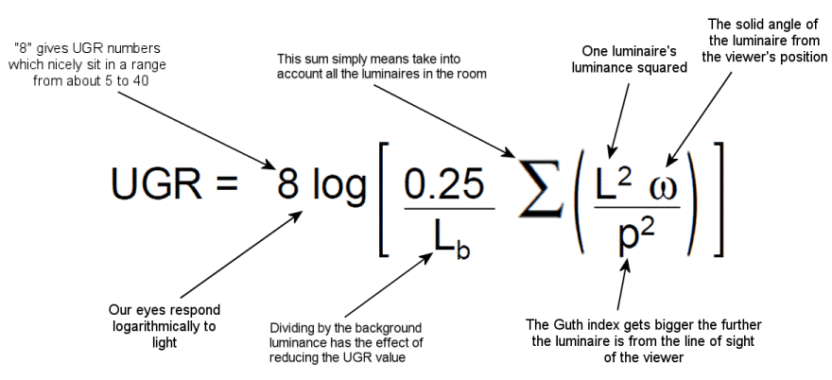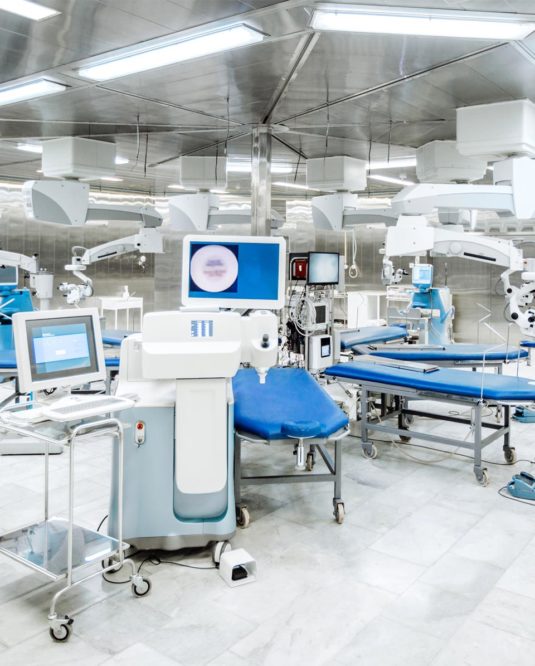Unified Glare Rating explained
What is UGR?
UGR stands for Unified Glare Rating and is a numerical measure of how much glare is emitted by luminaires. Glare can adversely affect wellbeing and productivity in the workplace, particularly where there are lots of computer monitors.
The UGR rating ranges from 5 to 40, with lower numbers indicating less glare. It is calculated using a strict formula where the luminescence of a lamp is divided by the visible light luminance from the room background.


UGR in Plain English
In practice, you need to know that a luminaire with a UGR under 13 will create no noticeable glare, while a rating of over 28 will certainly distract people. Here are the various UGR limits for a variety of environments. So, for example, in an office workplace you should not fit luminaires with a UGR rating greater than 19.
UGR ≤ 16 Technical drawing
UGR ≤ 19 Reading, writing, training, meetings, computer-based work
UGR ≤ 22 Craft and light industries
UGR ≤ 25 Heavy industry
UGR ≤ 28 Railway platforms, foyers
While there are no statutory glare levels for lighting in the UK, the UGR rating is a good guide to back up the common sense approach for illumination in workplaces and in education, which is that visual comfort is essential. Workplace (Health, Safety and Welfare) Regulations just stipulate that lighting at work is “suitable and sufficient”. Other lighting regulations focus on safety at work.


Sick Building Syndrome
The NHS identifies poor lighting which creates glare or flicker on visual display units as a possible cause of Sick Building Syndrome (SBS) so it makes good sense to ensure that direct and reflected glare is kept to a minimum to avoid health and work-performance issues, like nausea, blurred or double vision, flickering sensations, itching and burning eyes, tension and vision fatigue.
Often these symptoms can be traced to excessive glare on monitors so lighting design is crucial and the SLL Code for Lighting is the most comprehensive guide for designers.
The choice of flicker-free LED lighting is sensible, given that the stroboscopic effect of a 50Hz fluorescent tube can be very troublesome for people working. See our range of flicker-free LED panels.


Reflected glare
In HSG 38: Lighting at Work, the Health and Safety Executive says it is important that lighting:
- does not cause glare, reflected glare in polished surfaces, flicker or stroboscopic effects
- allows people to notice hazards and assess risks
- is suitable for the environment and for the type of work carried out
- provides sufficient light on the task
- allows people to discriminate between colours
- does not cause excessive difference in illuminance in an area or between areas
- suits the needs, including any special needs, of individuals working in the area
- does not pose a health and safety risk in itself
- is suitably positioned for easy repair, maintenance and replacement, and safe disposal
- includes emergency lighting, where necessary